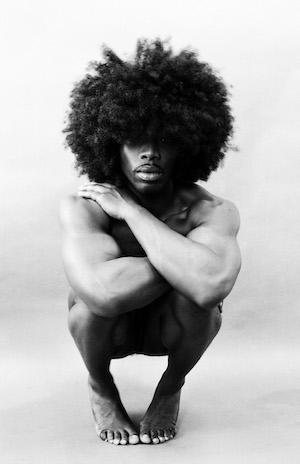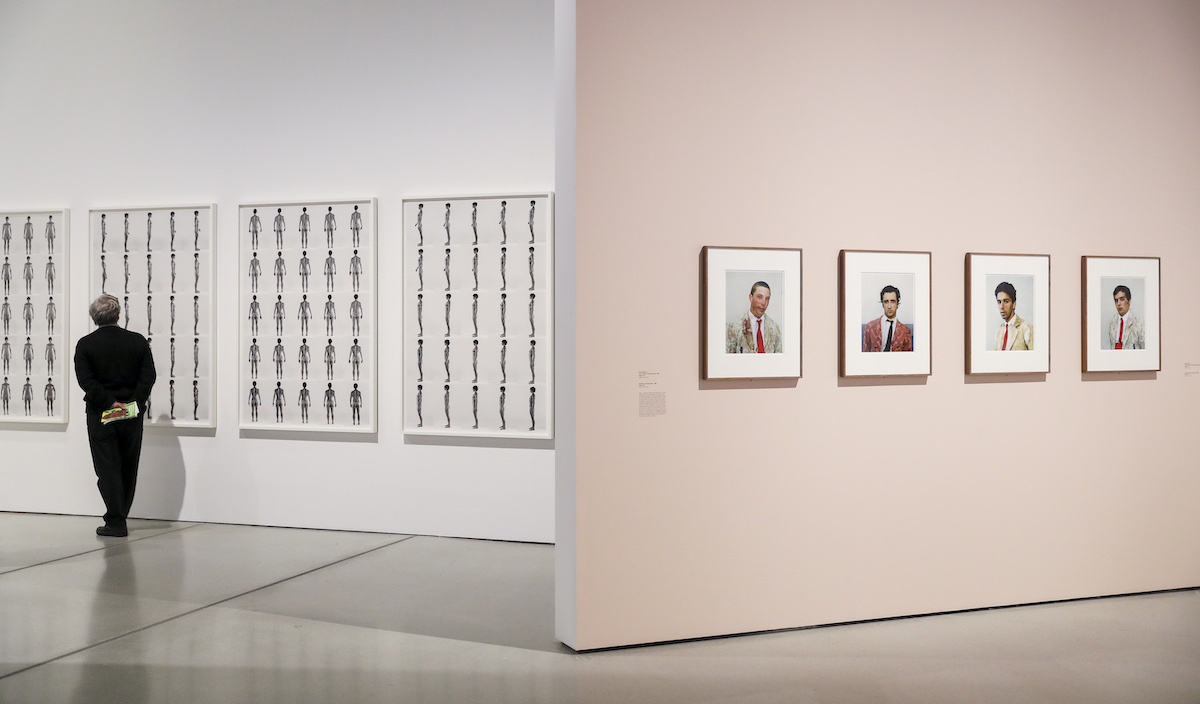
Masculinities: Liberation through Photography focuses on the plural form of masculinity. How there are so many different kinds of ways men can be men. How these can interact with one another in infinitely wonderful ways. And how they are made even more complex when looked at through the lens of sexuality, race and class.
The Barbican Centre tackles all of this (a hefty task) by taking over both levels of their main art gallery. To fill this space, they’ve collaborated with over 50 different artists (mostly photographers but filmmakers too) to exhibit more than 300 different works. Be sure to set aside a good chunk of your day for this one.

Walking from one section to the other, you’ll discover different ways in which artists have used photography to challenge traditional views of masculinity. The show is a constant unpacking of gender. It critiques old views. And presents a whole series of alternative perspectives.
And throughout it all, the Barbican Centre works at celebrating manhood. It’s showing how brilliantly diverse masculinity really is and how toxic masculinity is just one of its many forms.
This is first done by challenging the main aggressive and strong stereotypes of masculinity. Thomas Dworzak’s series Taliban consists of portraits of found hidden away in photographic studios in Kandahar just after the US invasion of Afghanistan.
The soldiers are shown in uniform holding hands, covered in flowers and surrounded by colourful backdrops – all the while holding up their guns. These tender moments challenge the traditional tropes of manhood – especially important as soldiers tend to be seen as the apex of masculinity.
More challenges then come hard and fast. Jeremy Deller, Robert Mappelthorpe and Rineke Dijkstra show different sides to the athlete, the bodybuilder and the wrestler in both photography and film. The trans masculine artist Cassils goes further in their sequence of photos named Time Lapse.
NOW READ: Museum of London display to celebrate Dub Reggae
It documents the radical transformation of their body through the use of steroids and a rigorous training programme reflecting on ideas of masculinity without men. Here, masculinity is physically constructed through the use of diet, exercise and drugs.

The consequences of the mainstream being dominated by one singular definition of masculinity are unpacked further on. Toxic masculinity is best shown in Andrew Moisey’s 2018 photobook The American Fraternity: An Illustrated Ritual Manual which weaves together archival photographs of former US presidents and supreme court justices who all belonged to the fraternity system.
These are shown alongside images depicting the initiation ceremonies and parties that characterise these male-only organisations. Instructions are given to men on how to behave (in often very sexist ways), highlighting the learnt and performed nature of gender. When this kind of masculinity dominates positions of power, countless issues arise.
The exhibition then goes on to discuss gender in the family, the Gay Liberation Movement of the 1960s and the issues surrounding the representation of black men in the media before finally ending with the ways in which women define masculinity.

It is a photography exhibition of epic proportions – which is all too necessary when tackling everything related to masculinity. Well, at least as much as you can cover in one show.
Each section could easily be unpacked even further. Queer representations of masculinity. Black masculinity, as told through a white lens. Masculinity and the family. Masculinity and age. Masculinity and class. Each of these is touched upon in this exhibition and each could be further unpacked in another exhibition of their own. Perhaps a year-long series on gender could help with that.
But for now, Masculinities: Liberation Through Photography celebrates the wonderful sides of masculinity all the while highlighting its many problematic parts. Gender is a complex thing. Dive deep into it at this major group exhibition and open your mind to it all.
Masculinities: Liberation through Photography runs at the Barbican Centre until 17 May
Follow City Matters on Twitter, Instagram and LinkedIn.






